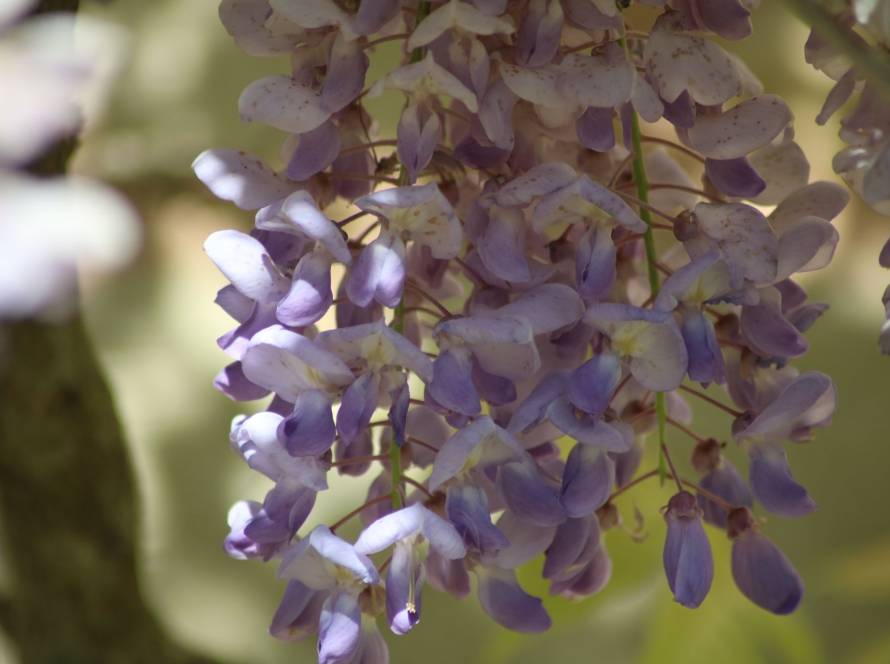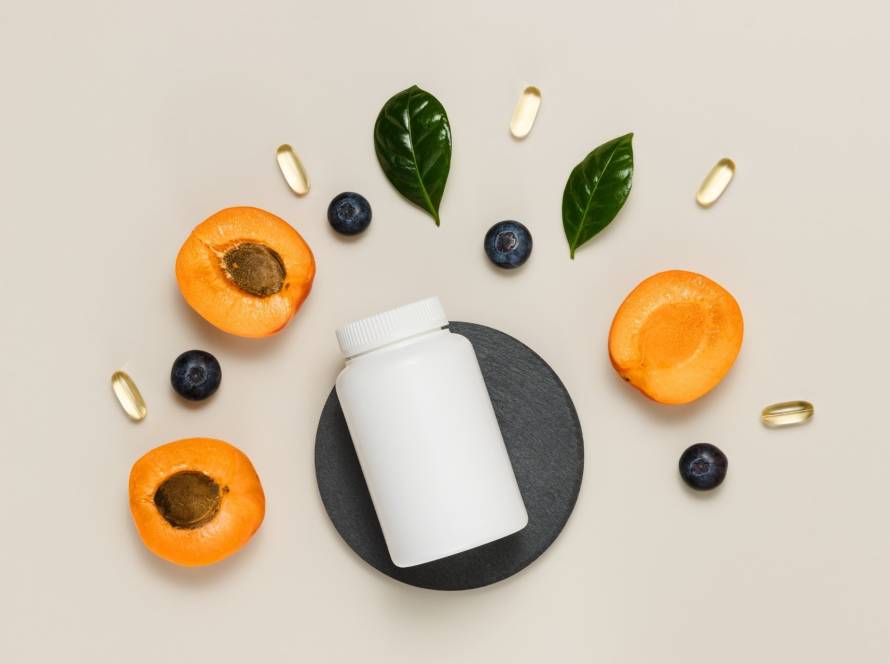Luteolin and quercetin are often confused as the same compound, but they have distinct differences. These powerful plant compounds share many similarities as flavonoids with impressive health benefits, yet their structures and biological activities set them apart.
This piece answers the question “is luteolin the same as quercetin?“, exploring these fascinating compounds similarities, differences and potential uses to enhance longevity and health.
Understanding luteolin and quercetin individually
What is luteolin? Key benefits and sources
Luteolin (3′,4′,5,7-tetrahydroxyflavone) is a yellow crystalline flavonoid that has four hydroxyl groups at positions 3, 4, 5 and 7. This natural compound is part of a large group of secondary metabolites found throughout the plant kingdom. Over 350 plant species contain luteolin or its glycosidic forms.
We can find luteolin in celery, broccoli, green pepper, artichoke, carrots, parsley, thyme, peppermint, basil and dandelion.
The compound shows impressive pharmacological benefits, including anti-inflammatory, antioxidant and neuroprotective effects. Research shows it fights inflammation by controlling cytokines, blocking COX-2 enzymes and reducing metalloproteinases. Its antioxidant powers come from direct free radical scavenging and boosting the body’s natural defenses through the Nrf2 pathway.
What is quercetin? Key benefits and sources
Quercetin (3,5,7,3′,4′-pentahydroxyflavone) stands out as one of the most common dietary flavonoids. This yellow crystalline compound has three benzene rings and five hydroxyl groups. It won’t dissolve in cold water but mixes well with alcohol and lipids.
We’ll find quercetin in onions, apples, berries, grapes, broccoli, citrus fruits, cherries, capers and drinks like green tea, coffee and red wine.
Quercetin’s powerful antioxidant properties bring many health benefits. Studies show it helps curb cancer by triggering cell death and stopping cancer cell growth. The compound also kills many harmful bacteria, especially Gram-positive ones. It reduces inflammation by blocking inflammatory cytokines and enzymes.
How they work in the body
These flavonoids work by fighting oxidation and inflammation. They neutralize harmful free radicals and lower oxidative stress that leads to chronic diseases.
The body doesn’t absorb quercetin well because it doesn’t dissolve easily in water and breaks down quickly, even though it can pass through cell membranes. Luteolin works at tiny concentrations to block inflammation signals and control important pathways like NF-κB, AP-1 and JAK-STAT.
Both compounds can reach the brain through the blood-brain barrier, which explains why they protect nerve cells. Luteolin shows promise in controlling brain inflammation and might help people with conditions like multiple sclerosis.
How are luteolin and quercetin similar?
Luteolin and quercetin, two powerful flavonoids, share remarkable biological activities despite their different molecular structures. These compounds naturally occur in fruits and vegetables and come from the same plant compound family.
Shared antioxidant mechanisms
These flavonoids work as potent antioxidants and their activity increases with concentration from 0.5 to 32.0 μg/ml, according to research. Their hydroxyl groups give them exceptional free radical scavenging abilities. Quercetin has five hydroxyl groups while luteolin has four. The structural features let them delocalize electrons and create resonance to neutralize reactive oxygen species effectively.
These compounds boost the body’s internal antioxidant defenses by activating the nuclear factor erythroid 2-related factor 2 (Nrf2) pathway. This transcription factor controls the expression of over 200 antioxidant enzymes. The result is higher production of protective enzymes like superoxide dismutase (SOD), catalase (CAT) and glutathione peroxidase (GPx).
Anti-inflammatory pathways
The most important aspect is how luteolin and quercetin share anti-inflammatory mechanisms. They effectively block key inflammatory mediators including:
- Cytokines (IL-6, IL-1β, TNF-α);
- Enzymes (COX-2, iNOS);
- NF-κB signaling pathway activation.
Studies show these flavonoids reduce nitric oxide (NO) production and phagocytosis at concentrations of 50, 100 and 200 μM. The bidirectional relationship between oxidative stress and inflammation explains why both compounds address these connected processes simultaneously.
Support for immune and cellular health
These flavonoids regulate mast cell activity, often called “the immune gate to the brain”. They block histamine release from mast cells and lower the production of pro-inflammatory substances. Both compounds show antiviral properties.
These compounds protect neurological health by crossing the blood-brain barrier and reducing neuroinflammation. They also show anticancer potential by suppressing cell growth and triggering apoptosis in cancer cell lines of all types.
The similarities between these compounds suggest they might work better together than individually through a collaborative effort.
How are they different?
Luteolin and quercetin come from plants but work in very different ways that make them unique.
Luteolin’s role in brain and neuroinflammation
Luteolin shines when it comes to protecting nerve cells. This flavonoid can easily cross the blood-brain barrier, which makes it work well for brain-related conditions. The compound helps with traumatic brain injury and nerve disorders by stopping inflammation. It does this by blocking microglia and astrocyte activation.
Studies show that luteolin cuts down pro-inflammatory cytokines (TNF-α and IL-6) by a lot while boosting anti-inflammatory cytokine (IL-10) production in microglia cells. Luteolin also guides microglia cells toward an anti-inflammatory M2 state instead of the inflammatory M1 type. This special way of working makes luteolin valuable for brain inflammation problems.
Quercetin’s role in allergy and cardiovascular health
Quercetin, on the other hand, really helps with allergies. It stabilizes mast cells, which stops histamine release and blocks inflammatory substances that cause allergic reactions. Research proves it helps treat hay fever, asthma and even stops severe peanut allergy reactions. Quercetin works better than cromolyn, a common asthma medicine, at blocking IL-8.
Quercetin also helps heart health by a lot. It lowers blood pressure by making blood vessels work better and cutting down oxidative stress. The compound reduces plaque buildup in arteries through its antioxidant and anti-inflammatory effects. People who eat high-fat diets see lower triglycerides and cholesterol levels when taking quercetin.
Differences in absorption and metabolism
These compounds process differently in our bodies. After we take luteolin, our intestines absorb it and turn it into luteolin-3′-O-β-D-glucuronide as the main byproduct. Quercetin has poor oral bioavailability. Our body turns quercetin into glucuronides that quickly leave through urine. Luteolin stays in our blood longer, up to 12 hours after taking it, according to studies.
Should we take luteolin, quercetin or both?
We need to understand the unique benefits of each compound to make smart decisions about supplements. Our choice between luteolin and quercetin, or using both together, depends on what health benefits we want.
When to choose luteolin
Luteolin works best for brain-related issues. We might want to use luteolin if we need help with:
- Neuroinflammation conditions, since luteolin crosses the blood-brain barrier effectively;
- Brain fog or cognitive support because it reduces inflammatory signals in the brain;
- Cases where CD38 inhibition helps NAD+ levels.
Research shows luteolin supplements can protect neurons and help produce BDNF, which keeps neurons healthy.
When to choose quercetin
Quercetin really shines when we need help with:
- Seasonal allergies and histamine responses through mast cell stabilization;
- Heart health, as studies link quercetin consumption with lower risk of heart-related mortality;
- Recovery after exercise, with studies showing immune support after hard workouts.
Luteolin and quercetin together: synergy or redundancy?
These flavonoids actually work better as a team. Together, luteolin and quercetin show:
- Better antimicrobial effects against MRSA;
- Team up for immune support;
- Work together to fight inflammation.
Studies show luteolin’s MIC dropped from 500 to 380 µg/mL against ATCC 43300 when combined with quercetin.
Supplement forms and quality considerations
Both compounds are hard to absorb. Regular supplements have absorption rates nowhere near 10%, so:
- Liposomal preparations with olive pomace oil improve absorption;
- Quercetin phytosome formulations are 20x more bioavailable;
- Enteric-coated formulations help intestinal uptake.
Safety, dosage and contraindications
We should be careful because:
- These flavonoids can disrupt endocrine function, good for breast cancer but possibly harmful for endometrial cancer;
- Quercetin might make kidney problems worse and mix badly with medicines like cyclosporine and diabetes drugs;
- Pregnant women should stick to getting these compounds from food;
- Luteolin might increase irritability in half of children with autism spectrum disorders.
The safest way to get these flavonoids is through eating lots of plants rather than taking high-dose supplements.
To get longevity benefits, these flavonoids work best through a varied, plant-rich diet. We can add supplements as a targeted strategy based on our health goals, ideally with professional guidance. The most sustainable path to optimal health comes from adding these powerful plant compounds into our overall lifestyle rather than using them in isolation.


